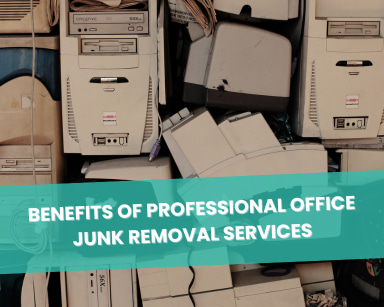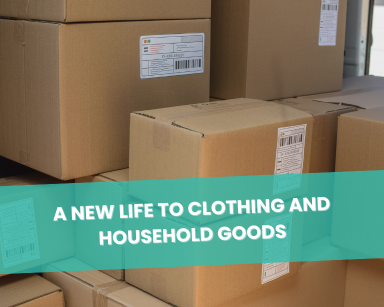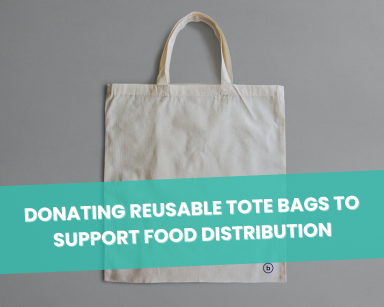Best Options To Liquidate Your Amazon Inventory
Amazon, the e-commerce titan, not only excels in providing a vast virtual marketplace but also in inventory management. But even within this realm of efficiency, surplus stock remains an inevitable challenge for many sellers. As businesses grapple with excess inventory, strategies like liquidation have become crucial. This article delves deep into the world of Amazon operations, exploring how to liquidate Amazon inventory effectively, the benefits of liquidation, and alternative sustainable solutions that ensure both profitability and positive environmental impact.
Table of Contents
Understanding Amazon Operations
In the dynamic world of Amazon, stock management is paramount. Each item placed for sale, whether a pair of shoes or an electronic device, is meticulously cataloged and stored on a pallet. This efficient system forms the backbone of Amazon’s operations, ensuring every item listed on their website is ready for immediate dispatch upon purchase.
Amazon and the Potential of Liquidation
Amazon’s commitment to efficiency doesn’t just end with storage and dispatch. The e-commerce giant also understands the potential problems associated with surplus stock and offers diverse solutions for sellers.
One such solution is liquidation. Amazon provides liquidation options for sellers, transforming piles of surplus stock into valuable resources. This process helps sellers free up space in their warehouse pallet, giving them more room to store profitable items.
Deeper Dive into Amazon’s Operations
Amazon’s operations, with their expansive network of warehouses and distribution centers, showcase a staggering efficiency. These warehouses, brimming with neatly stacked pallet, are the heart of Amazon’s business.
Their sophisticated inventory management system keeps track of every item, right from the moment it’s listed on the website until it’s dispatched for delivery. Amazon’s ability to handle large volumes of stock while ensuring seamless operations highlights the company’s logistics prowess.
Additional Insights on Amazon’s Operations
As the world’s largest online marketplace, Amazon’s operations are a paradigm of efficiency and dynamism. The heart of these operations lies in their vast network of warehouses, each brimming with pallet of stock ready for delivery. The precision and accuracy in tracking each item listed on Amazon’s website underline the sophistication of their inventory management system.
The Challenge of Excess Inventory
However, a common challenge faced by sellers on Amazon is excess inventory. Having surplus stock can tie up valuable resources and warehouse space, potentially impacting the seller’s profitability.
Fortunately, savvy entrepreneurs have found ways to turn this challenge into an opportunity through liquidation, auction, and even exploring alternative programs that aim to transform waste into energy.
Overcoming the Inventory Challenge on Amazon
Excess inventory on Amazon is a hurdle many sellers face. When unsold stock accumulates, it’s not just the loss of potential profits that hurts but also the opportunity cost of items that could have occupied that valuable space.
Amazon sellers are perpetually in search of solutions to manage excess stock efficiently. By exploring liquidation, they could convert this surplus inventory into profit, freeing up storage space and resources for more popular and profitable items.
Tackling the Excess Inventory Problem
Excess inventory is a recurring issue for Amazon sellers. The accumulation of unsold stock isn’t just a lost revenue opportunity, but it also represents wasted resources. Thankfully, liquidation emerges as an effective way for sellers to dispose of their excess stock, offering a chance to recover some lost investment and make way for more profitable items.
The Concept and Benefits of Liquidation
Liquidation is a widely employed strategy to address surplus inventory. Here, items are often sold in bulk or wholesale at auction, offering buyers a chance to acquire goods at significantly reduced prices. By opting for liquidation, sellers can free up valuable storage space, recoup some of their investments, and avoid the cost of long-term storage.
Benefits of liquidation:
- Reduced storage costs
- Opportunity to recoup investments
- Availability of goods at lower prices for buyers
When companies buy inventory for resale, they are taking a calculated risk. The way to make the most of this risk is by taking a smart approach.
Liquidation Auctions: The Process and Advantages
Auction is a popular way to liquidate surplus Amazon inventory. The process is straightforward: Amazon sellers group their excess items, typically on a pallet, and put them up for auction. Potential buyers can then bid on the pallet, often getting products at considerably reduced prices.
The advantages of a liquidation auction are twofold. Firstly, the sellers free up valuable warehouse space and recoup some of their investment. Secondly, buyers get a chance to buy products at significantly reduced prices.
Liquidation Alternatives: Waste to Energy and Beneficial Reuse
While liquidation is a viable option, alternatives such as the waste-to-energy program and beneficial reuse offer unique advantages. The waste-to-energy program, for instance, transforms items that are challenging to recycle into biofuel, thereby reducing the amount of waste directed to landfills.
On the other hand, beneficial reuse allows businesses to repurpose items that might otherwise end up in the waste stream. This practice is not only more cost-effective than other disposal methods but it also:
- Offers significant tax deductions
- Fosters social responsibility
- Strengthens relationships with communities
The way companies buy an item or dispose of it often outlines their commitment to efficiency and sustainability. The way we buy and dispose of things can have a significant impact on the environment.
Exploring the Potential of Beneficial Reuse
Beneficial reuse presents another eco-friendly solution to the surplus inventory issue. It allows businesses to repurpose their unused items, fostering a sense of social responsibility while saving on disposal costs. Whether it’s donating unused electronics or other items, businesses can build stronger relationships with communities while enjoying significant tax deductions.
How Liquidation Tackles E-Waste
Electronic items often make up a significant part of excess stock on Amazon. These can range from small gadgets to large appliances, all stored in warehouse pallet waiting to find a home. Through liquidation, Amazon sellers have the opportunity to address the issue of electronic waste.
Liquidation, particularly through auction, enables these electronic items to be bought and reused, thereby reducing e-waste. This approach is a win-win situation: sellers can clear their inventory and buyers get electronic items at lower prices.
What Our Company Offers: Bridging the Gap between Companies and Communities
This is where we, at Happen Ventures, come into the picture. Our mission is to make it easier for businesses to donate their waste or overstocked items to communities in need. We accept a diverse range of items, including electronics and other household goods. Our aim is to assist companies in minimizing landfill waste, thereby boosting their ESG (Environmental, Social, Governance) scores.
A New Purpose for Amazon’s Overstock Items: Community Donations
In addition to liquidation and the waste-to-energy program, Amazon’s stock can be repurposed for community donations. Many items that are not sold or auctioned off can find new homes with those in need.
From electronics to household goods, these items can serve a new purpose and foster a stronger relationship between Amazon sellers and local communities. Happen Ventures is proud to support such initiatives, helping businesses donate their overstocked items and improve their ESG scores.
Wrapping Up
Managing inventory efficiently is paramount for sellers on Amazon. With options like liquidation, waste-to-energy programs, and beneficial reuse at their disposal, they can turn excess reserves into a boon. At Happen Ventures, we assist businesses in realizing this transformation, delivering benefits to the environment, the community, and their bottom line. Visit our website to explore how we can turn your surplus stockpile into an opportunity for profit and positive impact.










